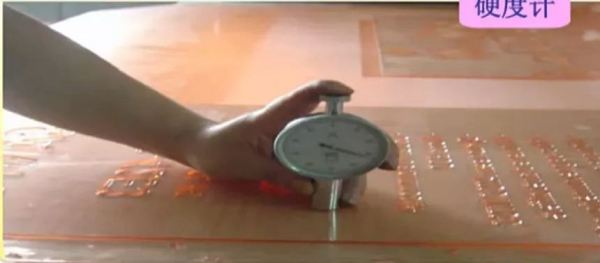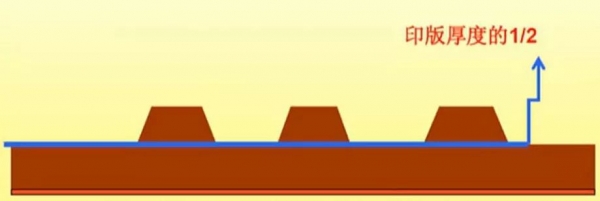After the plates are produced, they must go through strict quality control and inspection before they can be used. So what are the quality requirements of the flexible version, and how should it be stored after it is produced? Please follow the editor to understand the 6 quality requirements and storage conditions of the flexible version.
6 quality requirements of the flexible version
1. The printing plate must have a certain hardness
After the printing plate is finished, some parameters should be checked. The first is to check the hardness of the printing plate. For 3-7mm printing plates, the surface hardness is generally HS30 ~ 40 degrees. You can use the Shore hardness tester to measure the hardness of the printing plates. If the hardness is too high, it is easy to crack and reduce the service life; if the hardness is too low, the wear resistance is relatively poor, which will also affect the life.

â–³ Check the plate hardness with Shore hardness tester
2. Check the printed image
The four corners of the printing plate should be uniform and the thickness should be the same. The depth of the relief of the plate is generally about 1/2 of the thickness of the printing plate. Fine text and small gaps must have a certain depth. If the depth is not enough, the ink will overflow after a little penetration.

â–³ Check printing plate graphic
3. The edge of the text line must have a certain slope
If there is no slope, the bearing pressure of the printing plate will be relatively poor. If the bearing pressure is poor, the dots will sway left and right, which is easy to form the deformation of the printing plate. However, the thin version does not need a slope, because the thin version is relatively thin, such as a high-net cable, its thickness is only 1.7 mm, the stability is relatively high, and no slope is required, so the slope is for the 3.94 mm version.

4. Printed text, lines, solid blocks, no broken pens, broken strokes, broken lines, trachoma, dirty spots, these conditions will affect the printing quality.
5. The size and specifications of the printing plate are accurate, and the color separation version is correct.
6. Hierarchical version of outlets, high- and low-key outlets are not lost, the outlets are smooth, and some low-key outlets have a certain depth.
Plate storage
1. Storage of newly purchased plates
When the newly purchased material is stored in the warehouse, it must be placed on a shelf, the storage temperature is 4-38 ℃, the humidity is 40% -60%, away from heat and light sources. When opening the material, you must work in a dark room with yellow lights. You must avoid exposure to sunlight and light sources in unsafe conditions.
2. Storage of solid plates after printing
The flexographic plate can be used repeatedly. After printing, the printing plate must be cleaned, that is, the ink should be cleaned. The ink is water-soluble and easy to clean. If it is not washed, the ink will harden on the surface of the printing plate where it will contact the resin, which will have an erosive effect. The cleaned printing plate should be stored in a dry and dark place to prevent the plate surface from becoming hard, brittle, and cracked.
White Single Window Envelope,Commercial Single Window Envelope,Check Single Window Envelope,Business Single Window Envelope
Sun Kee Envelopes Limited , https://www.sunkeeenvelope.com